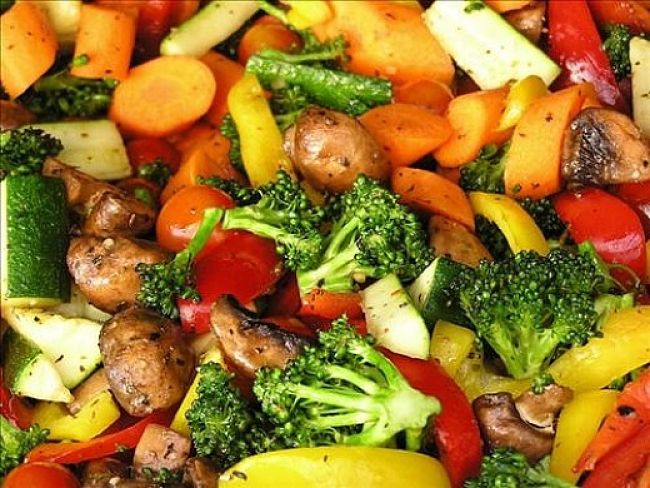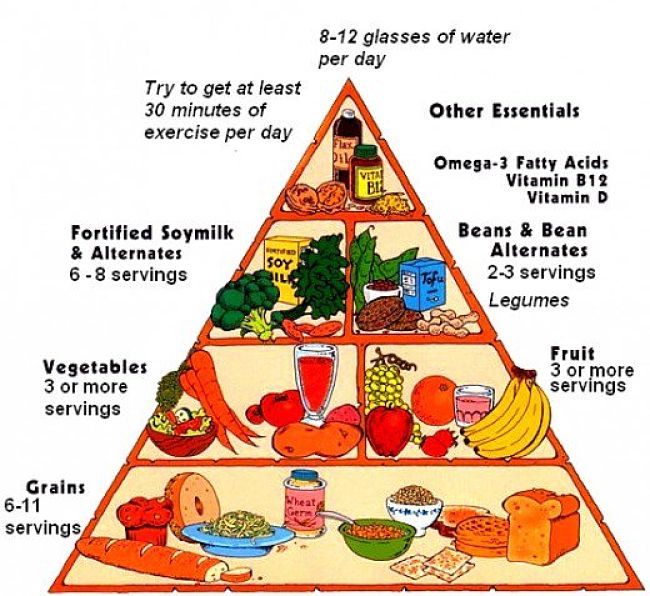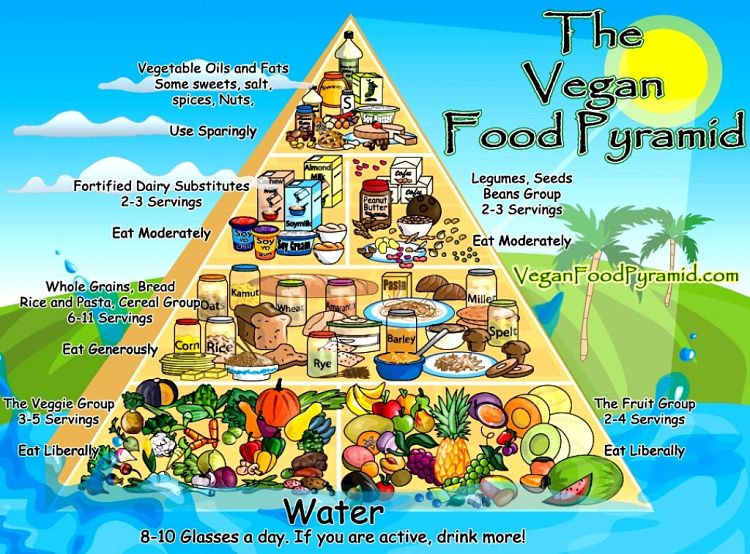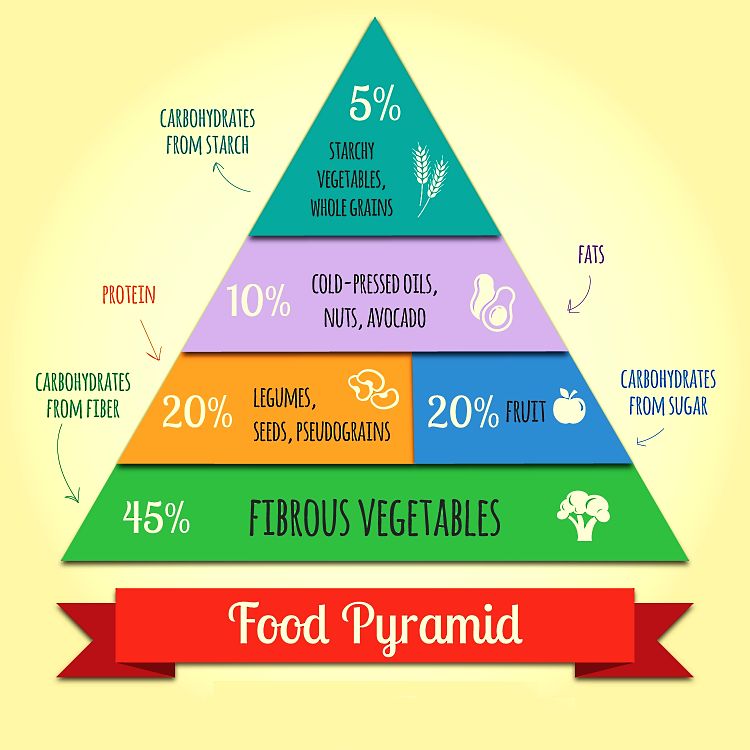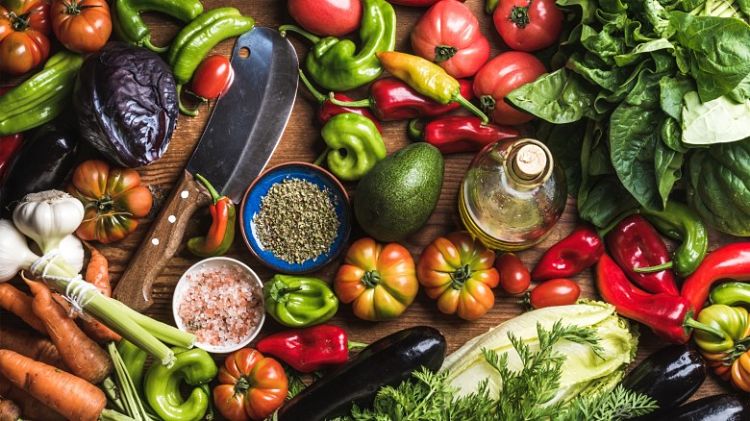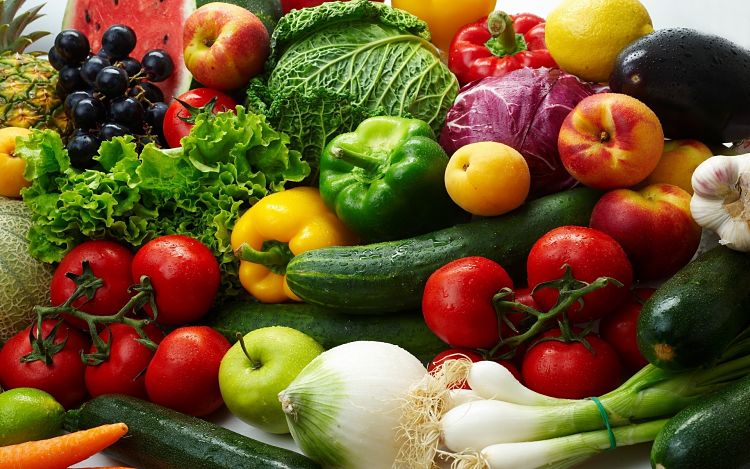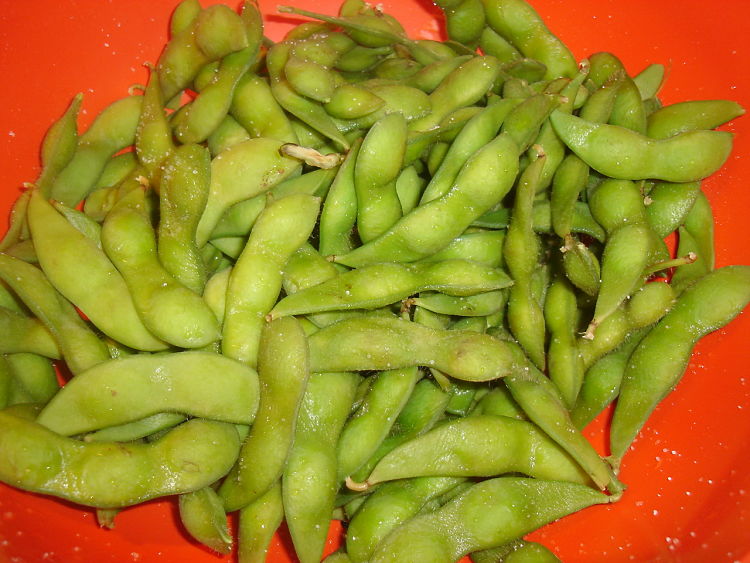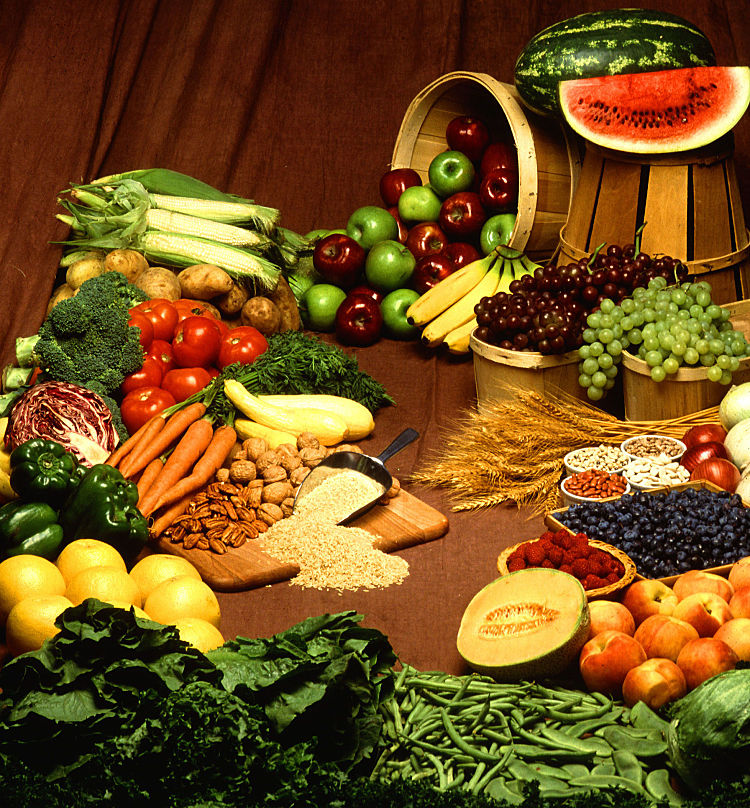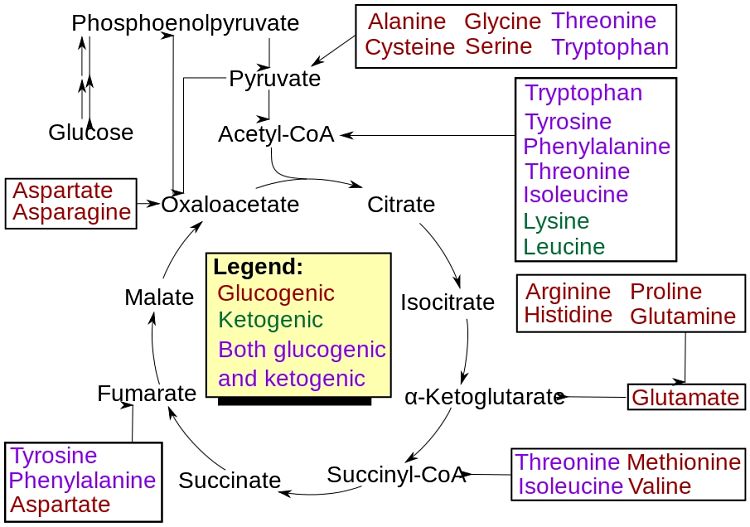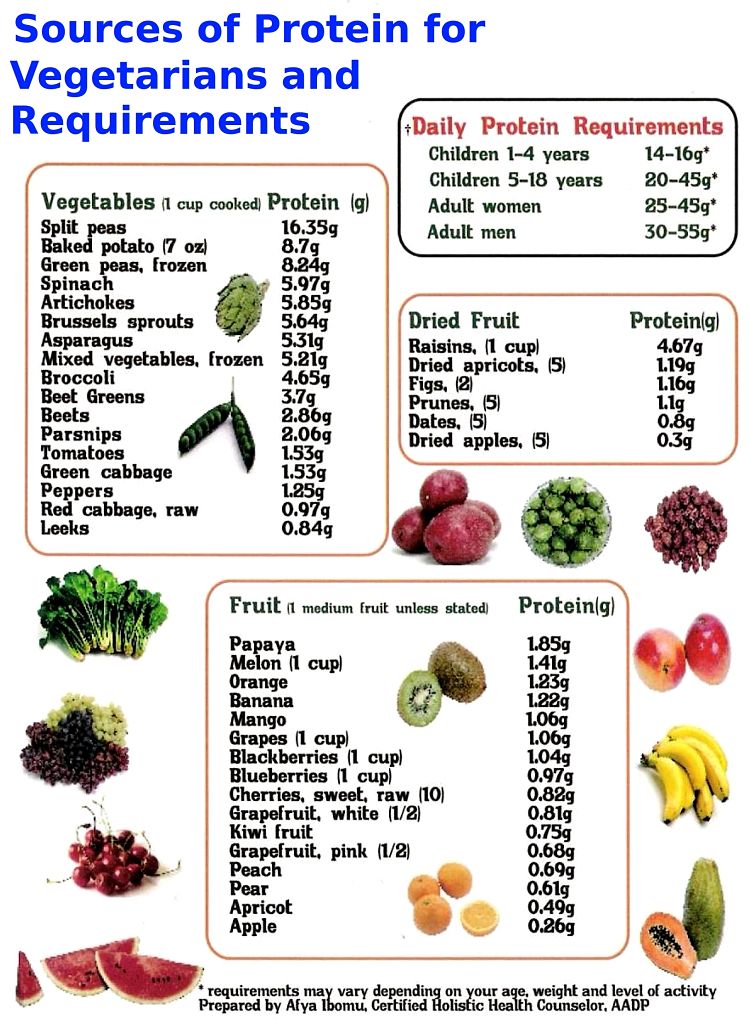Vegan Food Pyramid for Vegetarian Diets
People may choose a vegetarian diet for health improvement, ethical, cultural, religious or for other reasons. There are a wide range of vegetarian diet options, ranging from Vegan diets that exclude poultry, meat, fish, eggs and dairy products, to Lacto-ovo vegetarian diets that include eggs and dairy products.such as milk, cheese, yogurt and butter. Some vegetarian eat fish or seafood.
The key to planning a balanced vegetarian diet, whatever type you choose is to be aware of your nutritional needs and to develop a dietary plan that meets the specific needs of each diet.
The food pyramid concept has been very useful as a guide to the relative types of foods that the general population should eat. This article discusses the various versions of the food pyramid for vegans and other vegetarians have been developed.
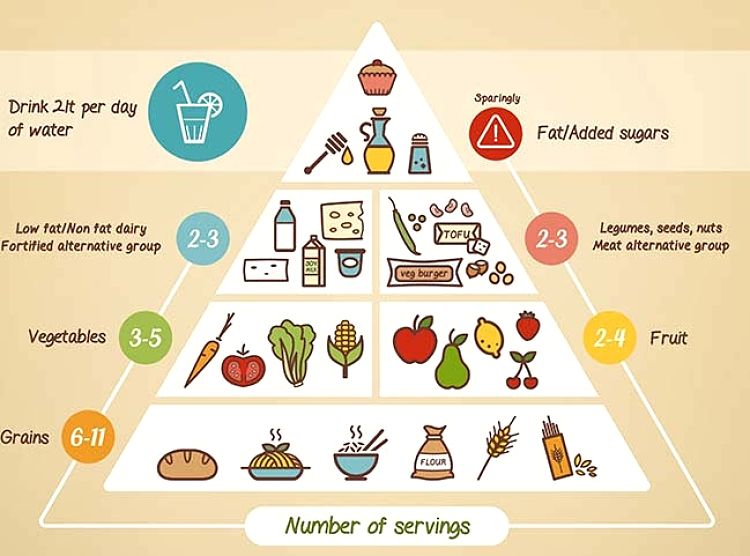
Types of vegetarian diets
- Vegetarian diets vary and some of the common types are:
- Vegan diets exclude poultry, fish, meat, eggs and dairy products - and any foods derived from these products.
- Lacto-ovo vegetarian diets exclude fish, meat, and poultry, but allow eggs and various dairy products.
- Lacto-vegetarian type diets do not include fish, meat, poultry and eggs, as well as any foods derived from them. Dairy products, such as cheese, milk, yogurt and butter, are allowed.
- Ovo-vegetarians eat plant foods and eggs, but avoid milk, milk products and flesh foods.
- Pesco/pollo-vegetarians eat meats like seafood and chicken, but do not eat other meats, such as beef, lamb, and pork.
- Semi-vegetarian diets or Flexitarian diets which are mostly plant-based diets but can include small amounts of eggs, dairy, poultry as well as fish and seafood on some occasions or in small quantities.
Vegetarian Diet Pyramid
A healthy diet requires planning and for vegetarians this can be especially important to ensure people get enough protein, essential amino acids and B group vitamins, especially B12. A food pyramid that excludes meat and that is designed for vegetarians can be very helpful for planning. The vegetarian pyramid provides general guidelines on the relative proportions of the various food groups for a healthy vegetarian diet. The vegetarian food pyramid is designed to empower vegetarians and vegans and support them with their diets.
The Base Layer
Whole Grains, Pasta, Rice, Cereals and Bread - While there has been a reaction against carbohydrates the key is eating whole grains and complex carbohydrates in moderation and to avoid the highly processed versions that have high GI and low calorie densities. For vegetarians, whole grains and pastas are a staples of a meatless diet and should provide most of the daily calories. Notice that the number of serves for this group is very similar for the vegetables and fruit group and so the pyramid may be a little misleading. Ensure you are consuming a minimum of 4 servings per day even when dieting to help maintain the proper functioning of the brain and supply many of the essential amino acids that may be rare in vegetables sand fruit.
The Foundation
Fruit and Vegetables - The foundation of all vegetarian diets is obviously fruit and vegetables and people on these diets should eat at least 3 servings per day of vegetables and 3 servings of fruits. These foods provide calories, nutrients, vitamins and trace minerals that vegans and other vegetarians require to support their metabolism. Choose fresh or lightly steamed vegetables to retain the vitamins.
Middle Layers
Legumes (beans), Nuts and Seeds - Beans, seeds and nuts are great sources of fiber, healthy fats and proteins for all vegetarian diets. About 3 servings a day is ideal and the beans should not be overcooked.
Vegetable Protein, Soy Milk Products, Dairy or Dairy Substitutes, Meat Alternatives - Veggie burgers, textured vegetable protein (TVP), soy protein products, tempeh, tofu, and seitan should be generally limited to about 2 or 3 servings per day. The less processing applied for these foods the better as this means more vitamins and nutrients are included.
Apex
Fats, Oils, Sweets - Fats, oils and sweets should feature vegetarian or vegan diet sparingly. When choosing oils and fats to eat or cook with always select the healthier fats such as olive oil. Try to choose healthy sweetners as well, for example choose applesauce or agave as sweeteners instead of cane sugar or corn syrup. Vegans who do not take supplements or fortified products should ensure they consume a wide range of vegetable oils to ensure they get enough essential fatty acids (see below). Molasses is a good source of iron and calcium; and natural yeast contains a rich array of B group-vitamins, especially riboflavin and B12which are hard to get from a vegan diet.
Eggs and Milk - If you consume eggs and dairy in your vegetarian diet, try to only consume about 3 servings per day of dairy products such as milk and cheese cheese and milk. Eggs should only be eaten two or to three times a week.
Vegetarian Version of MyPlate
A vegetarian version of MyPlate of the new food guidelines from the US is shown in the image.
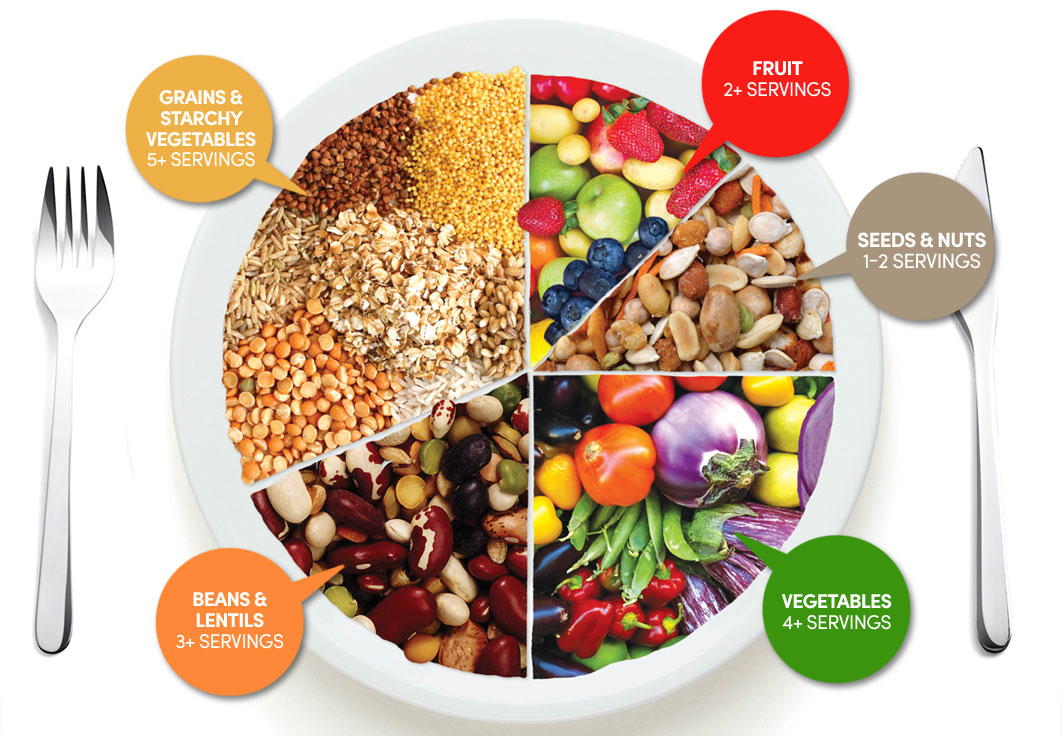
Suggested Servings of Key Groups
|
Food group
|
Suggested Daily Amounts
|
Serving Sizes
|
|---|---|---|
|
Vegans who do not consume fortified products - the vegetable oil is for calories and essential fatty acid; the molasses for iron and calcium; and the yeast for B-vitamins, especially riboflavin. Fortified brewers yeast has B12
|
1 serving daily
|
3-5 tsp vegetable oil + 1 Tbsp blackstrap molasses + 1 Tbsp brewer's yeast
|
|
Meat and fish substitutes
|
5 1/2 ounces
|
1 cup cooked dry beans, peas, or lentils; 2 eggs; 8 oz. bean curd or tofu; 1/2 cup shelled nuts; 3-4 Tbsp peanut butter
|
|
Milk and milk substitutes
|
3 cups
|
1 cup of milk or yogurt; 1 cup calcium and B12 fortified soy milk; 1 1/2 oz. hard cheese; 1 1/2 oz. calcium and B12 fortified soy cheese
|
|
Fruit
|
2 cups
|
1 medium piece of fruit; 1/2 cup canned, chopped, or cooked fruit; 3/4 cup fruit juice
|
|
Vegetable
|
2 1/2 cups
|
1/2 cup cooked, chopped or raw vegetables; 1 cup raw leafy vegetables; 3/4 cup vegetable juice
|
|
Grains
|
6 ounces
|
1 slice bread; 1/2 cup cooked cereal, rice or pasta; 1/2 bagel or English muffin; 6" tortilla
|
Key Points for Planning a Nutritious Vegetarian Diet
Vegetarians should ensure they get sufficient quantities of the following nutrients and components which if inadequate can cause deficiencies and associated health problems.
Energy
Energy in food, as measured by calories are supplied by carbohydrate, fat and protein. Vegetarians as a group may consume fewer calories and are thinner than meat-eaters, , though the amount of food that they eat may be equivalent. This happens because plant foods are bulky, rich in fibre and lower in calories than meat or cheese that are not eaten.
Omega-3 Fatty Acids
Research has shown the wide range of benefits of omega-3 fatty acids that need to be supplied in the diet. These fats lower the risk of cardiovascular disease, support brain and cognitive function, keep the vision systems working properly, and provide an anti-inflammatory role for the body. In general diets the primary sources of omega-3 fatty acids in the diet are organ meats and offal, fish and DHA-enriched foods, for example eggs. This creates a problem for many vegetarians who don't eat these foods and may be at risk of not getting enough omega-3 fatty acids in their diet. However there are an increasing range of DHA-enriched foods sold in the supermarkets and health food outlets, including soy products. Also, various omega-3 fatty acids supplements made not from fish, but DHA-rich microalgae are available.
Omega-3 DHA (Docosahexaenoic Acid) is a long-chain fatty acid, belonging to the Omega-3 fatty acid family of essential fatty acids. These fatty acids cannot be generally be synthesised by the body in adequate quantities and so are an 'essential' fatty acid that must be consumed in the diet to meet the body's need. The 3 main forms of Omega-3 are ALA, EPA and DNA. The last two, DHA and EPA are generally regarded as the most important of the Omega-3 group. They are largely sourced from fish oils in the diet, with tuna oil containing the highest natural content of DHA. Omega-3 A, is found in some plants.
DHA is the most complex form of Omega-3 and is difficult to guarantee it is consumed in your diet as it is only found in a few foods in significant amounts. Other forms of Omega-3 can be converted to DHA in the body, but the conversion process is very inefficient. Omega-3 DHA is taken up directly into cell membranes, whereas most plant-derived fatty acids are not.
Fats account for over 50% of the brain and Omega-3 DHA represents 30% of brain matter. The highest concentration of Omega-3 DHA in the human body is in the retina.
Omega-3 DHA is an essential component of breast milk, and newborn babies utilise Omega-3 DHA for nerve, brain and eye tissue development.
The biochemical processes in the human biology is such that we recycle ourselves many times over the human life-span. Unfortunately, this recycling process is not 100% efficient and so the essential fatty acids and amino acids must be continually re-supplied in food to make up for the losses.
Protein
Adequate amounts of protein are required for growth, building muscles and maintenance of virtually all the body tissues. Protein is necessary for many of the body functions involving hormones, enzymes, antibodies and milk production for lactating women. Plants can normally provide adequate amounts of protein and to supply the nonessential amino acids that the body can recycle or make. However there are a number of essential amino acids that the body cannot make and must be supplied continually in food. Unfortunately, some of the essential amino acids, while plentiful in meat and animal products are rare and in short supply in many plant proteins. While egg and dairy products provide more than adequate sources for ovo-lacto vegetarians, the only vegetable sources with reasonable amounts of all 8 types of essential amino acids are hempseed, chia seed, soy, amaranth, buckwheat, lupin beans, peanut butter, and quinoa. However, all the essential amino acids can be supplied by eating an adequate variety of plant sources that, in combination, provide all eight essential amino acids (e.g. beans and brown rice, hummus, nuts and whole wheat pita). A 1994 research study found a varied intake of such sources can be adequate. Variety is the key. A diet with adequate whole grains, legumes, vegetables, seeds and nuts can provide all the essential amino acids and protein. Textured vegetable proteins tofu, tempeh (usually made from soybeans and fortified with amino acids) are also good protein sources.
Creatine is a naturally occurring compound found in meat that is also synthesised by the body from amino acids. Creatine supplements appears to improve the ability of some professional athletes to train hard and recover.
Vitamins
Most vitamins are adequately supplied in vegetarian foods, including vegans and these diets are generally richer in vitamins than many meat based diets. The two vitamins of concern are
Riboflavin and Vitamin B12
Riboflavin helps the body metabolise fats, carbohydrates and proteins and helps maintain eyes, healthy skin and clear vision. The best sources for Riboflavin for meat eaters are liver, red meats and milk products. Vegans must ensure they get their Riboflavin from green leafy vegetables, grins or and fortified foods.
Vitamin B12 is needed for normal nerve function and red blood cell formation. Although the body can store this vitamin and reuse it for more than 20 years, deficiencies may develop that can cause nerve damage. The best sources of Vitamin B12 are shellfish, fish meats and cheese. Vegans must get this vitamin from yeast, fortified soy milk or a vitamin B12 supplement.
Vitamin D is important for Calcium metabolism. The best sources are fortified milk, liver and egg yolks. The body can make its own when the skin is exposed to sunlight. Many vegans need a vitamin D supplement.
Minerals
Iron - Vegetarian diets may contain very little iron which is readily available in meats. Vegetable foods that are relatively rich in iron include lentils, oatmeal, raisins, black beans, kidney beans, black-eyed peas, cashews, hempseed, soybeans. Many breakfast cereals, chickpeas, tomato juice, tempeh, molasses, sunflower seeds, thyme and whole-wheat bread are also good sources of iron.
Calcium - Most calcium comes from milk and milk products. Vegans need to eat dark green leafy vegetables to get enough calcium.
